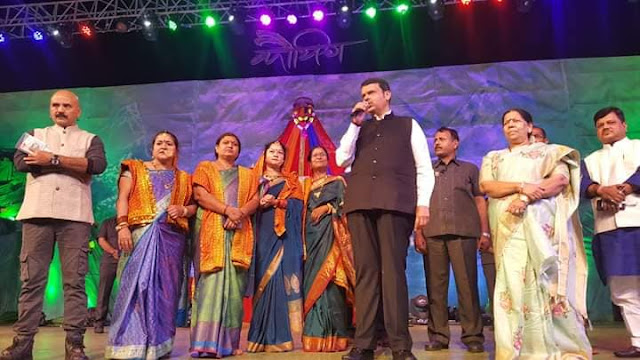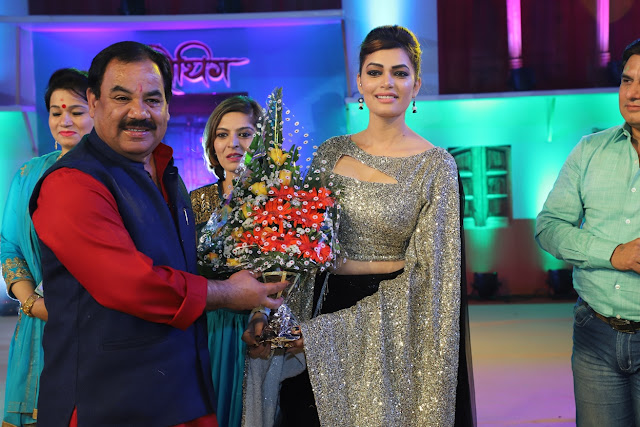Lord Shiva Unplugged
Of all the Hindu Gods none appealed to the
emotions of a Hindu mind as much as Lord Shiva, the dweller of the mountains
and the bearer of the trident, who with His third eye symbolizes the all
knowing awareness of the very Brahman.
Although universally acknowledged as one of the trinity gods of Hinduism, to
His followers, He is Maheswara, representing the Trinity all by Himself, His
different aspects manifesting themselves as the creator, preserver and
destroyer of the worlds He creates. Symbolically He is worshiped as
Lingeswara, which name stands more for His creative prowess than sexual.
Historians believe that He was a pre-Vedic god who was admitted into the Vedic
Pantheon because of His immense popularity among many non-Aryan tribes. There
is a theory that the seated yogi found on the seals of Indus Valley
Civilization, was a prototype of Lord Shiva only. References to Him are found
in the Rigveda.
In the Mahabharata we come across several references to Him. Both Arjuna and Krishna worshiped Him and obtained favors from Him. In
the Ramayana too we come across several references to Him. Sage Valmiki
depicted Ravana, the demon king and chief villain of the epic, as a great
devotee and daily worshipper of Lord Shiva. It is believed that worship of His
icons was widely prevalent as early as 2nd or 3rd Century B.C.
With the popularity of Saivism a great deal of literature grew around Him,
which came to be recognized as Agama literature. So great was His popularity
and fame that Agama literature was placed on equal footing to even the Vedas by
His followers.
In the Svetavatara Upanishad He was elevated to the status of Brahman, by the
sage who composed it, after he had a vision of Lord Shiva as the Absolute and
Supreme Brahman. Saivism as a popular movement took shape mainly in South India because of the patronage of the Pallavas and
the dedicated work of many great Tamil Saints, who built enormous bhakti or
devotional literature in His honor and made His name a household name.
Megasthanese mentioned the worship of Siva in his book Indika. So did
Patanjali, the composer of Yoga Sutras. A great devotee of Siva named Lakulisa
lived some time during the early or pre Christian era and founded the Pasupatha
sect, making in the process, Saivism a very popular movement in the
sub-continent. Two great rulers of ancient India
He is known by many names and tittles. As a god of anger, He is Rudra, the Red
One, feared by one and all. As Kailasapathi, He is the Lord of Kailash, His
Abode in the Himalayas . As Purusha, He is
Iswara Himself. As the Lord of the beings, He is known as Pasupathinath. As the
husband of Uma, the Mother Goddess, He is known as Umapathi or Parvathipathi.
As the bearer of the sacred river Ganges , He
is known as Ganagadhar. Because of His matted hair, He is dearly called as
Jatadhari, by His ascetic followers. As a perfect being He is Siddheshwar. With
His Trident in His hands, He became popular as heroic and fearless
Trisuladhari. As the world teacher, He was eulogized as Dakhshinamurthi by Adi
Shankara in his famous book, "Hymns to Dakhshinamurthi".
To the connoisseurs of art , He is well known as Nararaja, master of all dance
forms. As the perfect Yogi, He is credited with the source of all knowledge
concerning the various yogas. Such was His prowess and divinity, that Lord
Vishnu in His incarnations as Rama and Krishna ,
worshipped Him with great reverence. He was dearer not only to gods but also to
demons.
Many demons like Ravana and Bhasmasur were His ardent followers, to whom He
gave several boons out of His unbound love and in the process invited great
trouble for Himself and for others. Ever willing to help those who are in
distress, He saved the worlds and all the gods by partaking Halahal during the
churning of the oceans.
It is interesting to note that while He is worshipped as a Sex-God by Tantrics,
He is also known for destroying the physical form of Cupid with His third eye
when the latter tried to disturb Him during His meditation. Men and women love
Him alike for his unsurpassed qualities of love and generosity. Even today many
young and unmarried girls in rural India
Because of His close association with Vishnu, He is also known as Hari Har.
Combining in Himself both the male and female aspects of creation, He earned
the popular name of Ardhanariswara. As rider of the Bull Nandi, He is known to
the world as Nandiswara. Loved by His children Ganesha and Skanda, and followed
by His dutiful wife Parvathi, He became a symbol of ideal householder to His
devotees despite of His well known image as an introvert and an ideal ascetic.
Although known as the most auspicious Being (Sivam), and white in color in
contrast to Lord Vishnu who is darker, He has a darker side too. He has been
the object of worship by many schools of tantra, some of whom follow sexual
cults and other the negative paths in search of self-realization.
The fact that a great mass of heterogeneous cults and practices came to be
associated with Him, suggests that in His unlimited wisdom and boundless love
as a World Teacher and Father of all, Lord Shiva, gives immense freedom to His
followers to chose whatever path they want to follow for their
self-realization.
To the followers of Vira Saiva cult, He is Vira Bhadra, valor personified. In
His terrific forms, He is worshipped as Bhairavamurthy, Pataleswar and so on.
He has many temples built all over India India
His names are endless. So does His popularity. Even as early as the 2nd Century
A.D., His fame spread beyond the boundaries of the Indian Subcontinent and
spread to Central Asia. As the Hindu culture spread to far east, temples were
built in His Honor in many places like Java, Champa ( Indo-China), Kambhoja (
present day Cambodia
Matted
Hair
Unclad Body and Ash
Third Eye
Crescent Moon
Snake
Trident
Tiger Skin
Symbols of Lord Shiva
Matted
Hair
The
matted hair represents Lord Shiva’s connection with the wind and Brahma's
"breath of life". Lord Shiva is also the master of yoga, and the
three matted locks on His head signify the ideal of yoga that involves the
integration of the physical, mental and spiritual aspects of life.
Unclad Body and Ash
The unclad
body symbolizes the transcendental aspect of Lord Shiva. It is also believed in
Hinduism that ultimately all creation is destroyed by fire and becomes ash,
only to be renewed again in a new cycle. The ash smeared on Lord Shiva’s body
signifies that He transcends physical phenomena and is not affected by it.
Third Eye
Lord
Shiva is also known as Tryambaka Deva, which literally means ‘three-eyed Lord,’
and is often depicted as having three eyes. His right and left eyes are the sun
and moon respectively, while His third eye is the eye of wisdom. As His right
and left eyes represent His activities in the physical world, the third eye in
the middle of His forehead symbolizes spiritual wisdom and power, seeing beyond
the apparent and also destroying evil and evil-doers.
Ganga
Ganga, or
the river Ganges, is the most sacred river in India Ganges
also signifies the essential element of ritual purification. By holding the Ganges in his matted hair, Lord Shiva allowed the holy
river to traverse the earth and bring its purifying water to humans.
Crescent Moon
Often
depicted on Lord Shiva’s head is a crescent moon, representing the cyclical
nature of the universe. The waxing and waning of the moon symbolizes the cycle
through which creation evolves. Furthermore, since Lord Shiva is the Eternal
Reality, He is beyond time and the cycle of creation.
Snake
Lord
Shiva is often shown with a snake curled three times around His neck. The three
coils of the snake represent the cycle of time – the past, present and future.
The snake around Lord Shiva’s neck symbolizes his transcendence over the cycles
of creation and time.
Trident
The
three-pronged trident known as the Trishul shown with Lord Shiva symbolizes His
three fundamental powers, or shakti, of iccha, kriya, and jnana (will, action
and knowledge). The trident also represents Lord Shiva’s power to destroy evil
and ignorance.
Tiger Skin
Lord
Shiva is shown sitting on or wearing a tiger skin. The tiger is the vehicle of
Shakti, the Goddess of power and force, and since Lord Shiva is the master of
Shakti, He is beyond and above any kind of force. The tiger skin that Lord
Shiva wears symbolizes His victory over every force. The tiger also represent
lust, and Lord Shiva indicates, by sitting on the tiger skin, that he has
conquered lust.










Yoga Teacher Training Course Rishikesh
ReplyDelete